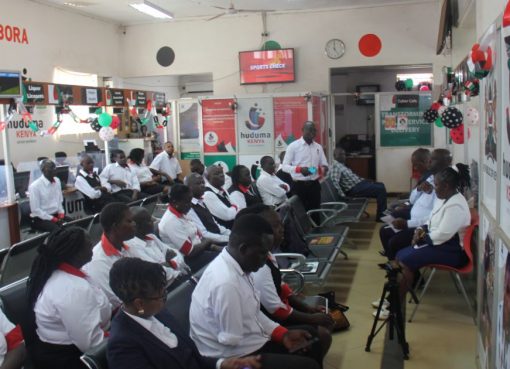The State Department for Environment and Climate Change, in partnership with UNICEF and other stakeholders, has developed the Children’s Climate and Disaster Risk Model (CCDRM).
CCDRM is an online platform to track climate and disaster risk levels faced by children in Kenya and show how the children and the community they grow up in are at risk due to climatic and other related shocks and stressors.
The tool provides multisectoral evidence to inform strategic and sustainable climate programming. The CCDRM will show where and how children are at risk according to various indicators used in the model and also provide evidence on how and why risk varies from county to county and offer more localized evidence for strategic local climate action with a special focus on children and their development support system.
It aligns with not only a bottom-up growth and development model for a prosperous Kenya and its Vision 2030 aspirations but also aligns with the updated nationally determined contribution (NDC), the national adaptation plan, and the national climate change action plan (NCCAP 2023-2027).
Speaking at the launch of the CCDRM held at the Radisson Blu Hotel, Nairobi Upper Hill, Principal Secretary, State Department for Environment and Climate Change, Dr. Eng. Festus Ng’eno, said that the report from the CCDRM indicates that children are seven times more vulnerable than adults to climate and environmental hazards, both physically and physiologically, and are less able to withstand and survive shocks from climatic and environmental hazards.
“In recent months, we have witnessed the severe consequences of climate change, ranging from the worst drought in 40 years to the ravaging floods,” PS Ng’eno stated.
“The CCDRM is a powerful example of how national stakeholders can work together to create a decision-making tool on climate change adaptation and disaster risk reduction with a strong focus on children and their communities,” he added.
PS Ng’eno added that the tool will support the unpacking and implementation of the National Climate Change Action Plan III and help stakeholders target interventions and ensure that all children in Kenya have an equal and fair opportunity to reach their full potential.
The CCDRM highlights that while most children in Kenya are at risk from climate change and environmental hazards, those in Turkana, Samburu, Marsabit, Wajir, Mandera, Tana River, and Garissa are worse off and are considered to be at a very high risk. An estimated 2.4 million children live in these counties facing very high-risk levels of climate and disasters.
UNICEF Kenya Representative, Shaheen Nilofer observed that children are more vulnerable to the effects of climate change as it threatens their welfare and growth. “The climate crisis is a child rights crisis, and the CCDRM reveals the varying risk levels in each county, highlighting the urgent need for targeted action.
This model is a vital tool for stakeholders to prioritise investment in climate action and disaster risk reduction efforts, building long-term resilience and sustainability for children and communities.”
The launch of the CCDRM aligns with Kenya’s vow to protect children and youth from climate change impacts, as stressed in the new National Climate Change Action Plan 2023-2027.
NCCAP’s focus on children and young people underscores the importance of empowering them to actively contribute to both national and local climate action schemes.
By Cecil Oduor and Judy Totari





